The Spectacular Rise of Ornamental Plants
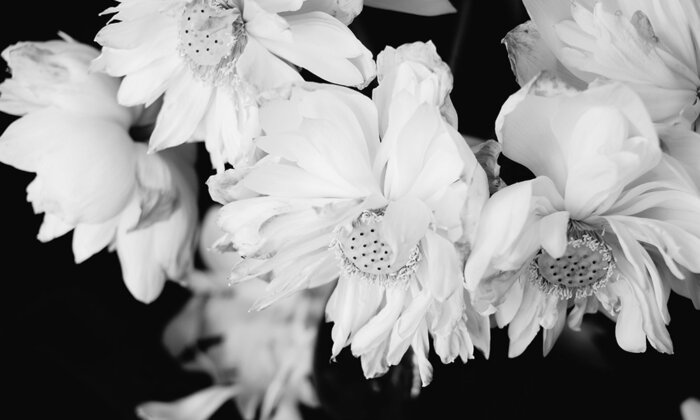
Aesthetic appeal may have played a role in the domestication of plants and animals, but the rise of pure ornamentals, that is, plants cultivated only for their aesthetic characteristics, is a much later development. Long after the emergence of urban civilization, ornamental and economic uses of plants seem not to have been distinguished. For example, the elegant gardens depicted in Egyptian tombs of the 18th Dynasty (ca. 1415 BCE) consisted, as far as we can tell, of multiple-use plants. Among those that have been identified are date palms, grapes, pomegranates, papyruses, and figs.
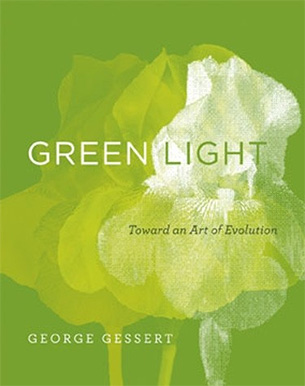
A few Egyptian tomb paintings show flowering plants that may have been pure ornamentals, but could just as well have been medicinals. Even blue water lilies, which are ubiquitous in Egyptian art, were more than symbolic and ornamental. The rhizomes of Nymphaea caerulea yield a powerful hallucinogen that the Egyptians probably used to make contact with the gods.
The earliest gardens that seem to have been intended primarily for pleasure were in Mesopotamia. The Gilgamesh epic, which refers to events in 2700 BCE, contains descriptions of what may have been ornamental gardens; however, the first unmistakable evidence of plants cultivated for pleasure is from Assyria. There, kings had hunting preserves and parklike tree plantations. Tiglath Pilesar I, who reigned about 1100 BCE, brought back cedars and box from lands he conquered. Other Assyrian kings left records of parks planted with palms, cypresses, and myrrh.
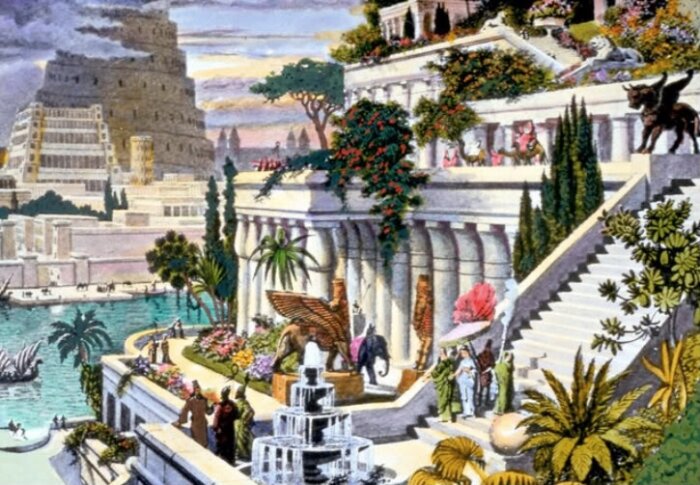
We do not know what these parks looked like. The first nonutilitarian gardens that can be loosely reconstructed date from the sixth century BCE. The Hanging Gardens of Babylon were created by Nebuchadnezzar, who, the story goes, built them for his Persian wife, who was homesick for the mountains of her childhood. Babylon was situated on a river plain. The terraced gardens, which covered three or four acres, were said to resemble a green mountain. The earliest records of the Hanging Gardens are by the Greek historians Diodorus and Strabo, but no remains have ever been found. However, remnants of Cyrus the Great’s (ca. 585-ca. 529 BCE) garden at Pasargadae still exist. It had trees and shrubs planted symmetrically in plots.
Records of Mesopotamian parks and gardens emphasize trees. Why trees rather than flowers? In the case of Cyrus the Great’s garden, only the remains of trees and shrubs have survived the centuries. Herbaceous plants, if they existed, have vanished. The Greeks, whose records we must rely on for much of our information about Mesopotamian gardens, were not horticulturally advanced, and may have been unduly impressed by the largest, most obvious plants. Still, trees were almost certainly important features of Mesopotamian gardens. Trees provide shade, a necessity in that part of the world, with its intense light and scorching heat.
The practice of cultivating plants for aesthetic pleasure seems to have arisen independently in four widely separated places: Mesopotamia, China, Mexico, and South America.
In addition to their utilitarian value, many trees are architecturally pleasing, and have symbolic and social significance. Like other agricultural peoples, the Mesopotamians cleared land for crops and cut trees for wood. Near towns and cities, groves left uncut may have gradually disappeared because cattle, sheep, and goats grazed and trampled seedlings, allowing no new trees to grow. When forests are reduced to memories, surviving remnants may take on new meanings. Groves can become emblematic of the past, and sacred. They can also become indicators of wealth and worldly power.
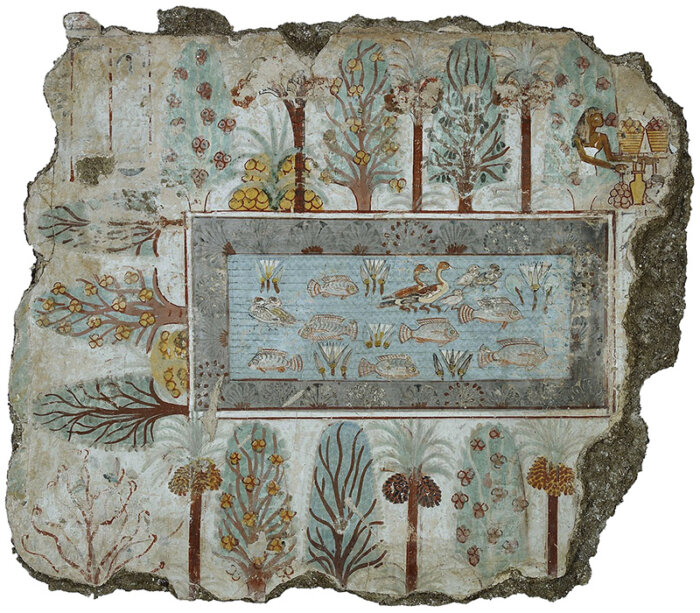
The same meanings do not necessarily accrue to smaller flowering plants. Agriculture and herding eliminate many kinds of small plants, but others spring up in their places, even when environments have drastically changed. As a result, ecological discontinuities between past and present can be less immediately obvious with herbaceous plants than with trees.
Agriculture and herding tend to impoverish environments biologically and to the senses. Pleasure gardens may be a reaction to the sensory and emotional impoverishment of overly instrumental, bleakly humanized environments. The Mesopotamian gardens for which we have plans were organized geometrically, which today may not seem the best remedy to visual poverty. However, for the ancients, geometric plantings would have recontextualized familiar plants and provided new experiences, among them a heightened sense of meaning and security. In Mesopotamia the geometric ordering of space was used to suggest an alternative to nature. Gardens, known as paradises, were walled spaces where divine order could be recreated. This order was mathematical.
We know that these mathematical spaces were sensuously enriched with displaced species and plant combinations unknown in the wild. There may also have been pruned, grafted, and trained plants. And, in time (after all, Mesopotamian civilization was more than 2,000 years old by the time of Homer), new varieties would have arisen in gardens, with or without encouragement from people.
From Mesopotamia the concept of the pure ornamental spread westward. Neither the Egyptians nor the Greeks seem to have added much to Mesopotamian and Persian ideas, although the Greeks, with their passion for the written word, left the first extensive records of ornamental plants.
The Romans enthusiastically took up ideas from the East. As early as the middle of the second century BCE Roman estates had pleasure gardens. During the time of the empire some of these gardens were geometric, probably modeled after Eastern originals, but others were informal, wild gardens. Ornamental plant materials included many kinds of trees and shrubs, as well as herbaceous perennials, including violets, narcissuses, convolvuluses, hyacinths, ferns, periwinkles, anemones, rockets, lilies, pimpernels, saffron, and ivies. Calendulas and poppies are the first annual ornamentals on record.
An extreme and oddly prescient Roman garden was the parklike adjunct to Nero’s Golden House, built after the Great Fire of 64 CE, which destroyed most of the city of Rome. The Golden House had a pillared arcade 3,000 feet long and a vestibule large enough to accommodate a 120-foot-high statue of the emperor. The historian Tacitus, Nero’s near contemporary, wrote that the real wonder of the Golden House was not its “customary and commonplace luxuries like gold and jewels, but lawns and lakes and faked rusticity.” There were artificial woodlands, waterfalls, and an enormous pool “like a sea,” along with ploughed fields, vineyard, pastures, and both wild and domesticated animals. Rome already had many gardens, but the Golden House was something new, a country villa set in the center of the city.
Nero inspired such loathing that after his death, the Golden House was dismantled and its countryside restored to city. The Golden House was a cruel and ill-fated expression of a deep human need better answered (if still inadequately) by urban parks, green belts, and other attempts to preserve or recreate countryside in the city.
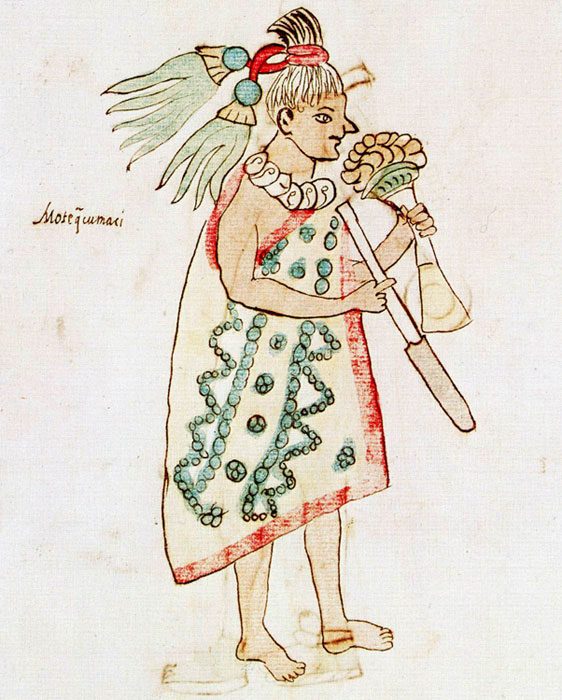
The emergence of pure ornamentals in the West is poorly documented, but their early histories elsewhere are even more difficult to trace. The practice of cultivating plants for aesthetic pleasure seems to have arisen independently in at least four widely separated places: Mesopotamia, China, Mexico, and South America.
The Aztecs and other peoples of ancient Mexico had pleasure gardens, and by the time of the Spanish invasion, dahlias, zinnias, and two species of marigolds had been cultivated long enough to have become domesticated. Accounts of early Mexican pleasure gardens often emphasize fragrance. To enter the garden of Netzahualcoyotl, the poet king of Texcoco, was, as the king’s descendent Ixtilxochitl described, “like falling into a garden raining with aromatic tropical flowers.” Aztec poetry associates floral perfumes and drunkenness. Lyrics to an Aztec song read:
I inhale the perfume
My soul becomes drunk.
I so long for the place of beauty
The place of flowers, the place of my fulfillment.
That with flowers my soul is made drunk.
The association of flowers with drunkenness is probably a literary device, but conceivably may reflect actual experience. The peoples of Mesoamerica were masters of mindaltering substances. The Aztecs and others used the pollen of maguey (the century plant, Agave americana) to produce dizziness. The flowers of at least one group of plants, the daturas, which figured prominently in Aztec medicine, have pollen and perfumes that cause intoxication.
The peoples of Mesoamerica were masters of mind-altering substances.
Out of curiosity, I placed a bouquet of daturas near my bed and breathed their scent as I fell asleep. I had no unusual dreams, so I tried again by bringing a datura relative into my studio, a potted brugmansia, a South American shamanic plant with hanging trumpet-shaped blossoms. The glorious fragrance gave me one of the worst headaches I have ever experienced. That ended my investigations into intoxicating perfumes.
We know very little about Inca pleasure gardens. The 16th-century Peruvian chronicler Garcilaso de la Vega, the son of an Inca princess and a conquistador, recorded that before the conquest, “all the royal palaces had gardens and orchards for the Inca’s [king’s] recreation. They were planted with all sorts of gay and beautiful trees, beds of flowers, and fine and sweet-smelling herbs.”Several other early accounts confirm the existence of Inca pleasure gardens, but as we might expect, the chroniclers were more interested in precious metals than in flowers. Consequently we know less about the ornamental plants that the Incas cultivated than about an assemblage of artificial plants fashioned out of gold and silver in the Temple of the Sun in Cusco. The assemblage included replicas of herbs, flowers, grains, and trees. Sculptures of useful plants, such as corn and quinoa, were mixed with flowers, lizards, and butterflies.
The idea of growing plants for pleasure may have made its way from Mesopotamia to China, but there is no strong evidence for this. More likely, shamans independently created the precursors to Chinese ornamental gardens. Shamanic gardens served ceremonial functions and contained plants valued for their powers to concentrate the vital powers of nature.
By the Warring States period (481–221 BCE), Chinese magicians and healers had evolved a kind of garden intended to entice spirits. Emperor Han Wu-ti (141–86 BCE) had two lakes built, each with replicas of the legendary islands of the immortals. The purpose of these artificial islands was to lure immortal beings and gain their secrets for the emperor.
Only an emperor could carry things so far. Already during Han Wu-ti’s reign parts of China were densely populated, arable land was in short supply, and a land use ethic had evolved that discouraged the acquisition of large estates for nonutilitarian purposes except by the emperor. The government confiscated huge game parks belonging to certain powerful officials and gave the land to the poor. Sometimes the government confiscated gardens as well. The Han Chinese evidently saw proto-ornamentals and the gardens where they grew as magical and healing in some circumstances, as status symbols in others, and in yet others as expressions of greed. Today there is a remarkably similar range of reactions to ornamentals and ornamental gardens in the West.

Literary evidence suggests that pure ornamentals existed by the Six Dynasties period (222-598 CE). Tao Yuan-ming (365-427 CE), who gave up a secure and high-paying government position because he felt that life was too short for the bowing and scraping necessary for such success, associated garden flowers with poetry and song. “I want not wealth. I want not power. Heaven is beyond my hopes. Then let me stroll through the bright hours as they pass, in my garden among my flowers.”
Camellias were first cultivated for oil, peonies for medicine, lotuses for food, and delphiniums as love potions and to control lice.
Many of today’s ornamentals began as multiple-use plants. Camellias were first cultivated for oil, peonies for medicine, lotuses for food, and delphiniums as love potions and to control lice. In the days before calendars, Japanese farmers brought into cultivation Iris ensata, the forerunner of today’s highly bred Japanese irises, because it bloomed at the time when rice had to be transplanted from seed beds to paddies.
The rose illustrates how circuitous the path to purely ornamental status can be. The Greeks and Egyptians grew roses as medicinal plants and for perfumes and wreaths. The ancients took wreaths quite seriously. They were worn as badges of honor and signs of rank, with proper use strictly enforced. Pliny tells of a man who was jailed for stepping out onto the balcony of his home wearing an inappropriate wreath of roses.

The first clear evidence of roses used as pure ornamentals is Roman. Murals at Pompeii show pleasure gardens with roses, and Pliny evaluated several different varieties for their aesthetic qualities. Yet even among the Romans roses may have been grown less for ornament than for use in wreaths, medicine, perfumes, or for their petals, which were scattered in the paths of dignitaries in the streets.
Flowers, especially roses, figured in Rome’s decay. Nero’s Golden House had rooms with paneled ceilings that slid open so that slaves, working overhead, could sprinkle guests with perfumes and petals. The highlight of Emperor Elagabalus’s brief reign was a party at which so many flowers were dumped on guests that several died of suffocation.
Because of associations with the bad old days, roses fell out of favor among Christians in Western Europe after the collapse of Rome. But roses continued to be cultivated for medicinal purposes and eventually became emblematic of the Virgin Mary, which restored the plant’s prestige. As late as the 18th century a third of all herbal remedies called for roses. Except for the vitamin C in remedies made from rose hips, the benefits were probably a matter of suggestion. Only in the last few centuries have most roses become purely ornamental.
In gardens, species that had never met in the wild were juxtaposed. Wind and insects did the hybridizing and gardeners did the selection. Well before the discovery of plant sexuality, some ornamentals had become remarkably refined. John Creech, former director of the U.S. National Arboretum and an authority on azaleas, wrote that “one can only be awed by the sophisticated level of azalea culture that existed [in seventeenth-century Japan]…. It is doubtful that there are any objectives pursued by modern azalea breeders that were not taken into consideration by the pioneer azalea developers, who produced selections that have not been duplicated since.” Seventeenth-century chrysanthemums, tulips, roses, and camellias displayed comparable accomplishments.
Taste in plants changes. Cyclamens with bizarre crests were popular in 18th-century Europe. Today these flowers are grown by only a few specialists. In Japan, petal-less azaleas consisting mostly of stamens were considered extremely elegant. Chinese and Japanese gardeners took chrysanthemums to heights of eccentricity, developing wilted-looking flowers and ones that resembled mops or shredded coconut.
Because of associations with the bad old days, roses fell out of favor among Christians in Western Europe after the collapse of Rome.
Different eras prefer different novelties. The Victorians were wildly enthusiastic about pelargoniums, newly arrived from South Africa, and fuchsias, from Central and South America. Kao Lin, a 15th-century Chinese cataloger of peonies, mentioned a cultivar named ‘Being Black Purple,’ which he compares to a black mallow, indicating an interest in black flowers. European fascination with black did not arise until two centuries later. Green flowers have never appealed to more than a minority. Kao Lin mentions peonies with green markings, but by his time, appreciation of green cymbidiums was already well established among the literati. In 17th-century Europe some tulips had green hearts or streaks, but it was not until the 18th century that a few British florists began deliberately selecting for green auriculas.
Preferences for particular patterns and forms also vary greatly. Striped camellias were popular in Japan, and striped dianthuses and tulips became fashionable in Europe, but nothing comparable seems to have developed in China, where selfs were favored. The Ottoman Turks preferred tulips with slender, pointed petals, while Europeans preferred broad, rounded petals. Long-cultivated flowers such as peonies, roses, and chrysanthemums increased in size in both Europe and China, but as long ago as the 17th century Chu Ta respectfully painted modestly sized chrysanthemums. Europeans, Chinese, and Aztecs favored very full doubles, but in Japan many gardeners preferred semi-doubles or singles. Aesthetic preferences among plants bear comparison to those in painting and sculpture. Some preferences are widely shared, but many belong to particular times and places.
In light of the refinement of 18th-century ornamentals such as auriculas, tulips, and ranunculuses, why weren’t they recognized as art? More than two centuries earlier Shakespeare in “The Winter’s Tale” had reflected on a streaked gillyvor, or carnation, as representing “an art which does mend nature — change it rather — but the art itself is nature.” Here the word “art” means “skill” or “craft” rather than fine art. Still, Shakespeare apparently understood certain cultivated plants as shaped by human choices. This was a major step toward considering some plants as fine art, because Europeans believed that art was a distinctively human activity (assisted, perhaps, by divine inspiration.)
The idea that art is uniquely human is not universal. The Chinese, Japanese, and Koreans who practiced highly sophisticated ornamental horticulture, believed that art arose from nature, and attributed the aesthetic and philosophical qualities of art to natural objects. In China, scholars collected remarkable stones and gnarled roots and displayed them as sculpture. These found natural objects were associated with landscape painting, which, along with calligraphy, occupied the pinnacle of the visual arts.
Cultural conditions in the East would seem to have favored recognition of various plants, wild and domesticated, as art. But this did not happen. One reason may be that until very late in the dynastic period, flower painting was considered an inferior genre. Joseph Needham, who spent the greater part of his life studying Chinese culture, suggests a deeper reason why bio art did not emerge in dynastic China.
The single greatest obstacle in the West to recognizing plant breeding as an art was the belief that art and nature are separate.
In attempting to answer the question of why science arose in the West but not in China, Needham came to the conclusion that the West suffered from a “schizophrenia of the soul,” characterized by a sharp split between the physical world and the realms of the spirit. Split consciousness was, to Needham, a condition that drove intellectual and cultural developments in the West. Science arose because it promised to help bridge the divide between nature and spirit and overcome the disease of dualism. The Chinese, who did not suffer from schizophrenia of the soul, were not driven to develop science, and did not need to heal themselves through bio art.
In 1694 Rudolph Camerarius, a professor of natural philosophy at the University of Tübingen, proved that plants reproduce sexually. This made plant breeding possible and would eventually draw attention to the role that humans played in shaping new kinds. However, in itself, an understanding of plant sexuality did not lead to recognition of plants as fine art. Part of the reason was that for at least another century, plant sexuality remained controversial. Also, during this time ornamental plant breeding became associated with the lower classes. However, the single greatest obstacle in the West to recognizing plant breeding as an art was not class prejudice or the scandal of plant sexuality, but the belief that art and nature are separate.
This idea, which can be traced back to Mesopotamia, comes to us mostly through the Bible, which claims there is an unbridgeable chasm between human beings and the rest of life. According to the book of Genesis, God created humans separately from the beasts and in his own image, but plants and animals exist merely in their own, earthbound images. The implications are clear: Not only are humans more important to God than any other kind of life, we belong to a separate and higher category of being.
Humankind’s absolutely singular and privileged place in the universe became a key Christian tenet, reinforced by borrowings from Greek philosophy. Aesthetic theory echoed church doctrine by arguing that art arose from the human mind or spirit and was therefore outside nature and superior to it. “Artistic beauty,” wrote Hegel, “stands higher than nature. For the beauty of art is the beauty that is born… of the mind… God is more honored by what mind does or makes than by the productions or formations of nature” (italics Hegel’s).
Not all philosophers were so adamant. Kant thought that art and nature are separate but that the line between them is not always clear. In “Critique of Judgment” he distinguishes between the aesthetic qualities of nature and the aesthetic qualities of fine art, but identifies artistic genius with nature. In addition, he includes landscape gardening among the fine arts, which means that living plants can be components of art.
Kant did not go so far as to recognize particular ornamental plants as works of art. To have done so would have risked intellectual heresy. As if to reassure his peers that he was no flaming radical, he describes flowers as “free beauties of nature,” using roses as his prime examples.His choice of roses rather than water lilies, say, is telling. By Kant’s time more than 200 varieties of roses were being cultivated in Europe, many of them highly domesticated. Yet he identifies roses as neither wild nor cultivated. This is a striking omission for a claim that roses represent nature’s beauty. By lumping wild and domesticated roses together as exemplars of nature, Kant left undisturbed traditional beliefs that cultivated plants are works of God created when the world began and unchanged ever since. His conveniently generalized rose maintained crucial elements of the ancient dualism that separated man from nature and art from life. Challenge to that dualism was to come less from philosophy than from science, with a little help from the arts.
George Gessert is an artist whose work focuses on the overlap between art and genetics. His exhibits often involve plants he has hybridized or documentation of breeding projects. He is the author of “Green Light
Toward an Art of Evolution,” from which this article is excerpted.



